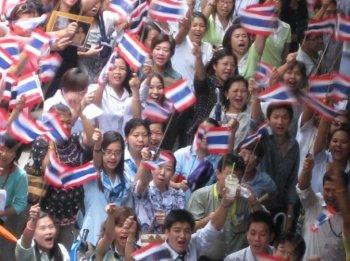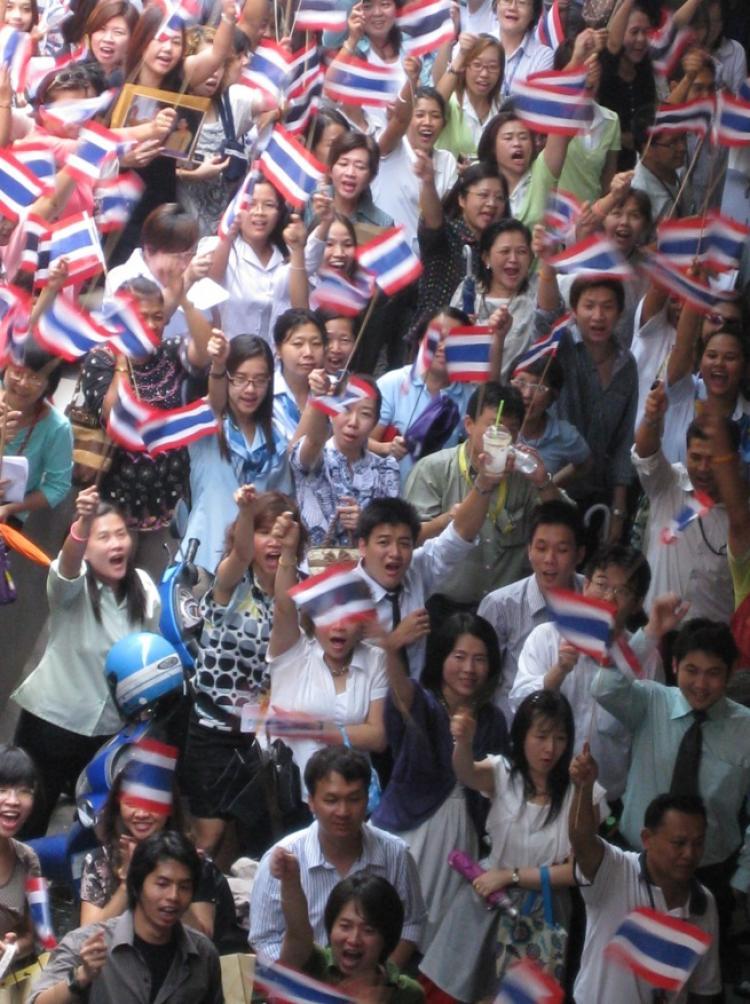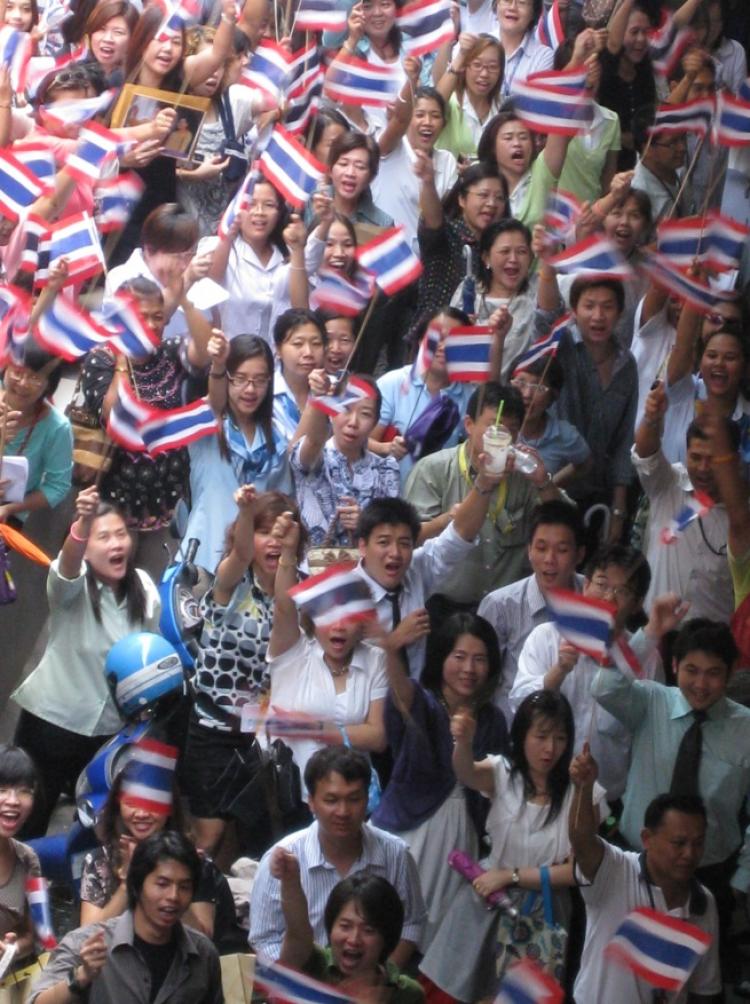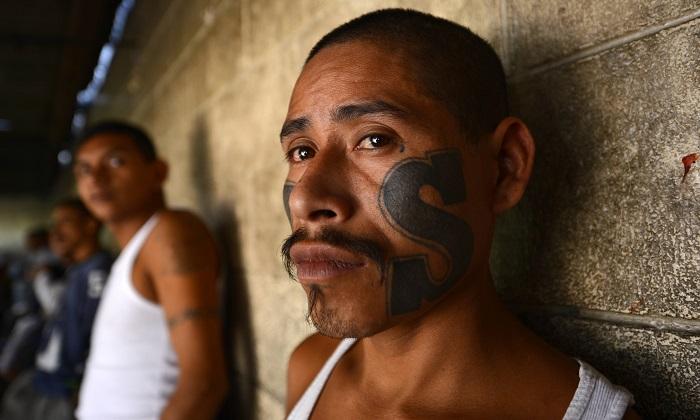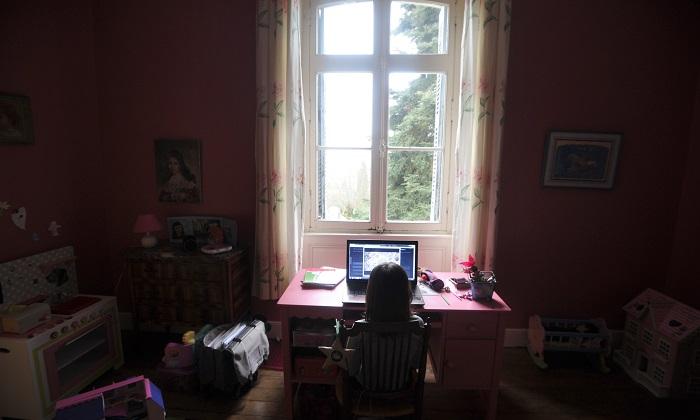BANGKOK—Passengers on Bangkok’s overhead light railway system—the BTS skytrain—are wearing plenty of neutral colors these days. Many of the city’s middle class, the bulk of the skytrain’s passengers, are avoiding any association with the country’s numerous colored-shirt political groups; particularly the red-shirted supporters of fugitive former prime minister Thaksin Shinawatra.
It has been a long month for many of the residents of the city of nearly nine million people. Six weeks of protests in Bangkok by tens of thousands of anti-government red shirts—formally known as the United Front for Democracy against Dictatorship (UDD)—has included viscous street fighting that resulted 25 deaths and the occupation of a central shopping district which is threatening to spill over to the city’s financial hub.
As the skytrain made its way toward the Silom stop it is easy to catch a glimpse of the red shirts main base and its stage where their leadership deliver fiery speeches and repeat demands that Thailand’s Prime Minister Abhisit Vejjajiva dissolve Parliament and make way for fresh elections.
The bulk of the red shirt’s speeches allege that the 44-year-old Prime Minister Abhisit and his government achieved office unlawfully, and were installed by the Thai military and the bureaucratic elite.
A new edition to the area, around the stage since the red shirts took it, is a massive black net hanging some 40 feet above the ground which shades an area the size of four tennis courts. Rumor has it—and rumors are rife—that the netting has been put in place to thwart gunmen hired by unhappy businessmen to shoot some of the red shirt leaders so they can reopen their businesses.
After changing skytrains, the trip follows close to a mile’s worth of road occupied by the red shirts to a barricade that they built opposite of positions held by Thai military at Silom Road which is considered Bangkok’s version of Wall Street.
The red shirts had spoken of extending their occupation of the city into Silom, but pulled back after the government brought in the military with orders to block them with lethal force if they attempted.
From the skytrain, as it passed over the area, some 50 red shirts could be seen standing on their barricades yelling at their opposition across the intersection and waving at passing traffic. Piles of sharpened bamboo poles were stocked up behind them. On the overpass above, red shirts also have built a tyre barricade on an overpass, taking up one lane of traffic—giving them some high ground, but not as high as the Sala Daeng BTS walkway where armed soldiers crouch behind sandbags.
Off the skytrain and down on the Silom Road itself, pedestrians make their way past razor wire while middle-aged women hand out water and cool wipes to combat soldiers and riot police. Hundreds of office workers on their lunch break waved Thai national flags and cheered on speakers standing on a pick-up truck’s roof denouncing the red shirt’s siege of their city.
Counter rallies to the red shirts are becoming more common in the city, with a large one expected to occur on Friday, according to local newspapers. Things are still heating up in the Thai capital with most of the chaos accessible by skytrain.
It has been a long month for many of the residents of the city of nearly nine million people. Six weeks of protests in Bangkok by tens of thousands of anti-government red shirts—formally known as the United Front for Democracy against Dictatorship (UDD)—has included viscous street fighting that resulted 25 deaths and the occupation of a central shopping district which is threatening to spill over to the city’s financial hub.
As the skytrain made its way toward the Silom stop it is easy to catch a glimpse of the red shirts main base and its stage where their leadership deliver fiery speeches and repeat demands that Thailand’s Prime Minister Abhisit Vejjajiva dissolve Parliament and make way for fresh elections.
The bulk of the red shirt’s speeches allege that the 44-year-old Prime Minister Abhisit and his government achieved office unlawfully, and were installed by the Thai military and the bureaucratic elite.
A new edition to the area, around the stage since the red shirts took it, is a massive black net hanging some 40 feet above the ground which shades an area the size of four tennis courts. Rumor has it—and rumors are rife—that the netting has been put in place to thwart gunmen hired by unhappy businessmen to shoot some of the red shirt leaders so they can reopen their businesses.
After changing skytrains, the trip follows close to a mile’s worth of road occupied by the red shirts to a barricade that they built opposite of positions held by Thai military at Silom Road which is considered Bangkok’s version of Wall Street.
The red shirts had spoken of extending their occupation of the city into Silom, but pulled back after the government brought in the military with orders to block them with lethal force if they attempted.
From the skytrain, as it passed over the area, some 50 red shirts could be seen standing on their barricades yelling at their opposition across the intersection and waving at passing traffic. Piles of sharpened bamboo poles were stocked up behind them. On the overpass above, red shirts also have built a tyre barricade on an overpass, taking up one lane of traffic—giving them some high ground, but not as high as the Sala Daeng BTS walkway where armed soldiers crouch behind sandbags.
Off the skytrain and down on the Silom Road itself, pedestrians make their way past razor wire while middle-aged women hand out water and cool wipes to combat soldiers and riot police. Hundreds of office workers on their lunch break waved Thai national flags and cheered on speakers standing on a pick-up truck’s roof denouncing the red shirt’s siege of their city.
Counter rallies to the red shirts are becoming more common in the city, with a large one expected to occur on Friday, according to local newspapers. Things are still heating up in the Thai capital with most of the chaos accessible by skytrain.
